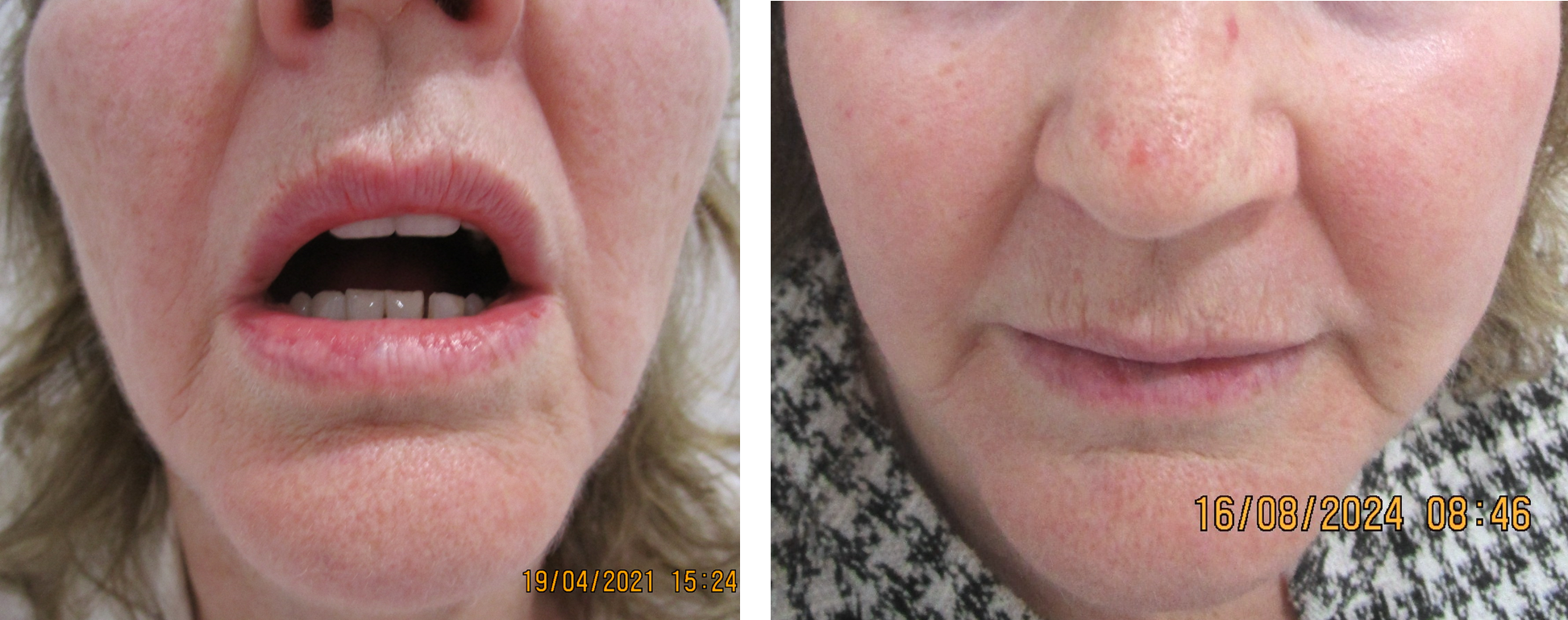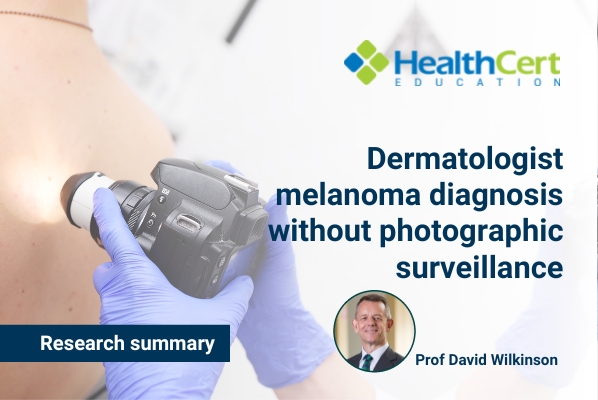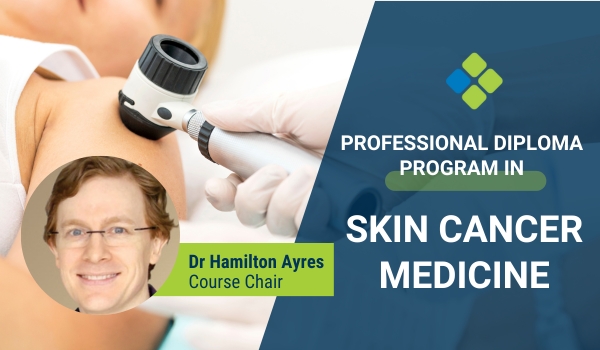Dermatology case study: Managing moderate to severe plaque psoriasis
Case study by Dr Liang Joo Leow OAM: How a 69-year old woman with longstanding plaque psoriasis achieved improvement* through tailored clinical management.
.jpg)
HealthCert Education
Case presentation
A 69-year old woman with a longstanding history of plaque psoriasis presented with persistent flares despite multiple previous treatments. Her condition was having a significant impact on her quality of life, affecting her confidence, social interactions, and even her clothing choices.
At presentation, she had extensive plaques on her elbows, knees, scalp, and lower back. Her PASI score was 12, placing her in the moderate/severe range. Examination revealed nail involvement (pitting, ridging, onycholysis, and a brittle proximal nail fold) as well as swelling over the dorsal hands suggestive of joint inflammation.
She reported trying several topical therapies, including corticosteroids (with and without vitamin D analogues), to limited effect. Methotrexate had previously been discontinued due to side effects such as nausea and fatigue. Importantly, she also described difficulty with injectable medications due to needle aversion.

Psoriasis management approach
In discussing treatment options, the focus was on balancing efficacy with the patient’s preferences and treatment tolerability. I reviewed the spectrum of available approaches:
- Topical therapies (corticosteroids, vitamin D analogues, combination products)
- Phototherapy for widespread or refractory disease
- Conventional systemic agents (e.g. methotrexate, cyclosporine, acitretin)
- Targeted oral agents offering non-injectable alternatives (e.g. TYK2 & PDE4 inhibitors)
- Biologic therapies (e.g. anti-TNFα, anti-IL17 & anti-IL23 monoclonal antibodies) for patients who qualify and are willing to use injectable medications
Considering her aversion to injections and adverse side effect burden, the patient chose to proceed with a targeted oral agent. Shared decision-making was central, aligning her treatment plan with her goals; in particular, achieving clearer facial skin without reliance on daily topical creams.
Outcomes
By four weeks, her PASI score had decreased to 5, and at 12 weeks it reached 1, demonstrating marked improvement.* She regained confidence, returned to regular gym activities, and no longer felt the need to conceal her arms with long sleeves, or her face with heavy makeup.

While her improvements may not have been dramatic to an external observer, they were highly meaningful for her daily life. The case illustrates how patient-centred care that respects preferences, tolerability and lifestyle can support adherence and satisfaction.
Clinical reflections
This case underscores several key points for GPs:
- Needle aversion can be a major barrier for some patients. Non-injectable options may be particularly valuable.
- Shared decision-making builds trust and improves adherence.
- Psoriasis red flags such as nail changes and joint pain should prompt assessment for psoriatic arthritis, where early optimal management is critical to prevent irreversible joint damage.
GP checklist: Psoriasis care in primary practice
- Assess severity (PASI, BSA, quality of life impact).
- Look for red flags:
- Nail involvement
- Persistent joint pain, swelling or morning stiffness
- Rapid progression or widespread disease
- Monitor comorbidities: obesity, diabetes, cardiovascular risk.
- Review adherence and tolerability of topical therapies.
- Consider systemic therapy for moderate to severe disease or poor response to topical agents.
- Refer to a dermatologist when:
- A high impact site is involved, e.g. face, nails, genitalia, scalp, palmoplantar (hands/feet), intertriginous skin
- Disease is moderate to severe (BSA >10%, PSA>10, PGA >2, significant quality of life impact)
- There are signs of psoriatic arthritis
- Severe pruritus
- Standard therapies have failed or are not tolerated, for example failure of topical therapy
- Patients request advanced treatment options.
Systemic therapy considerations and PBS criteria
When considering systemic or targeted treatments, it is important to recognise the prescribing restrictions under the Pharmaceutical Benefits Scheme (PBS):
- Conventional systemic agents (e.g. methotrexate, cyclosporine, acitretin) and targeted oral agents (e.g. TYK2 and PDE4 inhibitors) can only be initiated by a specialist (dermatologist, rheumatologist, or general physician)
- For targeted oral agents, GPs and nurse practitioners may continue (but not initiate) treatment where there is documented agreement from one of the above specialists
- For biologic therapies, only dermatologists are authorised to initiate and continue prescribing.
For GPs, the key role is identifying when to refer early. Once a patient’s psoriasis cannot be adequately controlled with topical therapy alone, or presents with moderate to severe involvement, referral to a dermatologist is crucial to ensure timely access to appropriate systemic options and prevent disease progression.
Final remarks
Psoriasis is a chronic condition, but outcomes can be meaningfully improved with the right treatment strategy. For GPs, recognising when to escalate care and involving dermatology colleagues early is essential. Timely referral can not only improve skin symptoms but also help prevent long-term joint damage in psoriatic arthritis.
- A case study by Dr Liang Joo Leow OAM
Dr Liang Joo Leow OAM
 Dr Leow is a passionate dermatologist with special interests in inflammatory skin disease, sun damage and skin cancer; and has published in peer-reviewed international journals on these topics, as well as on aesthetic surgery and medical ethics. He is an Adjunct Clinical Senior Lecturer with the University of Notre Dame, and serves on the editorial board of Advances in Therapy. He was the first dermatologist appointed to the peak committee for medicines regulation in Australia at the Therapeutic Goods Administration, and the first Australian recipient of the European Academy of Dermatology and Venereology’s Leadership Development Programme scholarship. Beyond dermatology, he holds official roles with the Royal Australasian College of Medical Administration and the International Association of Conference Interpreters. Dr Leow was awarded the Medal of the Order of Australia in 2020 for his service to medicine and the community.
Dr Leow is a passionate dermatologist with special interests in inflammatory skin disease, sun damage and skin cancer; and has published in peer-reviewed international journals on these topics, as well as on aesthetic surgery and medical ethics. He is an Adjunct Clinical Senior Lecturer with the University of Notre Dame, and serves on the editorial board of Advances in Therapy. He was the first dermatologist appointed to the peak committee for medicines regulation in Australia at the Therapeutic Goods Administration, and the first Australian recipient of the European Academy of Dermatology and Venereology’s Leadership Development Programme scholarship. Beyond dermatology, he holds official roles with the Royal Australasian College of Medical Administration and the International Association of Conference Interpreters. Dr Leow was awarded the Medal of the Order of Australia in 2020 for his service to medicine and the community.
Next steps in your learning journey
🎓 Certificate Courses in General Dermatology
Our university-assured, structured pathway to elevate your knowledge in GP dermatology. ➡️ Explore full program >
🎓 Micro-Courses in General Dermatology
Explore short, bite-sized CPD modules in focused topics in dermatology. Complete in less than 10 hours! ➡️ Browse Micro-Courses >
🎓 HealthCert 365 subscription
Prefer flexible learning across many topics? Access 4,000+ CPD hours on-demand with HealthCert 365 — any topic, anytime, one flat annual fee. ➡️ Discover HealthCert 365 >
Explore more free educational content in General Dermatology >
#Bristol Myers Squibb (BMS) has had little input into this content other than reviewing for significant omissions or errors of fact. BMS Australia abides by the Medicines Australia Code of Conduct and internal policies as such, will not engage in the promotion of unregistered products or unapproved indications. The statements, conclusions and opinions contained in this webinar are those of the writer and do not necessarily reflect those of BMS Australia. Treatment decisions are the responsibility of the prescribing physician. Before prescribing, please review the Sotyktu (deucravacitinib) Product Information.
*Case-based reflection, individual patient results may vary.
CPD self-submission
You can self-record CPD for this case study. Quick Log CPD hours with the RACGP/ACRRM via the usual self-submission process. You will be asked to reflect on what you have learned, and you will require supporting evidence such as a screenshot. For more information, view the: RACGP CPD guide | ACRRM CPD guide

 1800 867 1390
1800 867 1390

.jpg)



